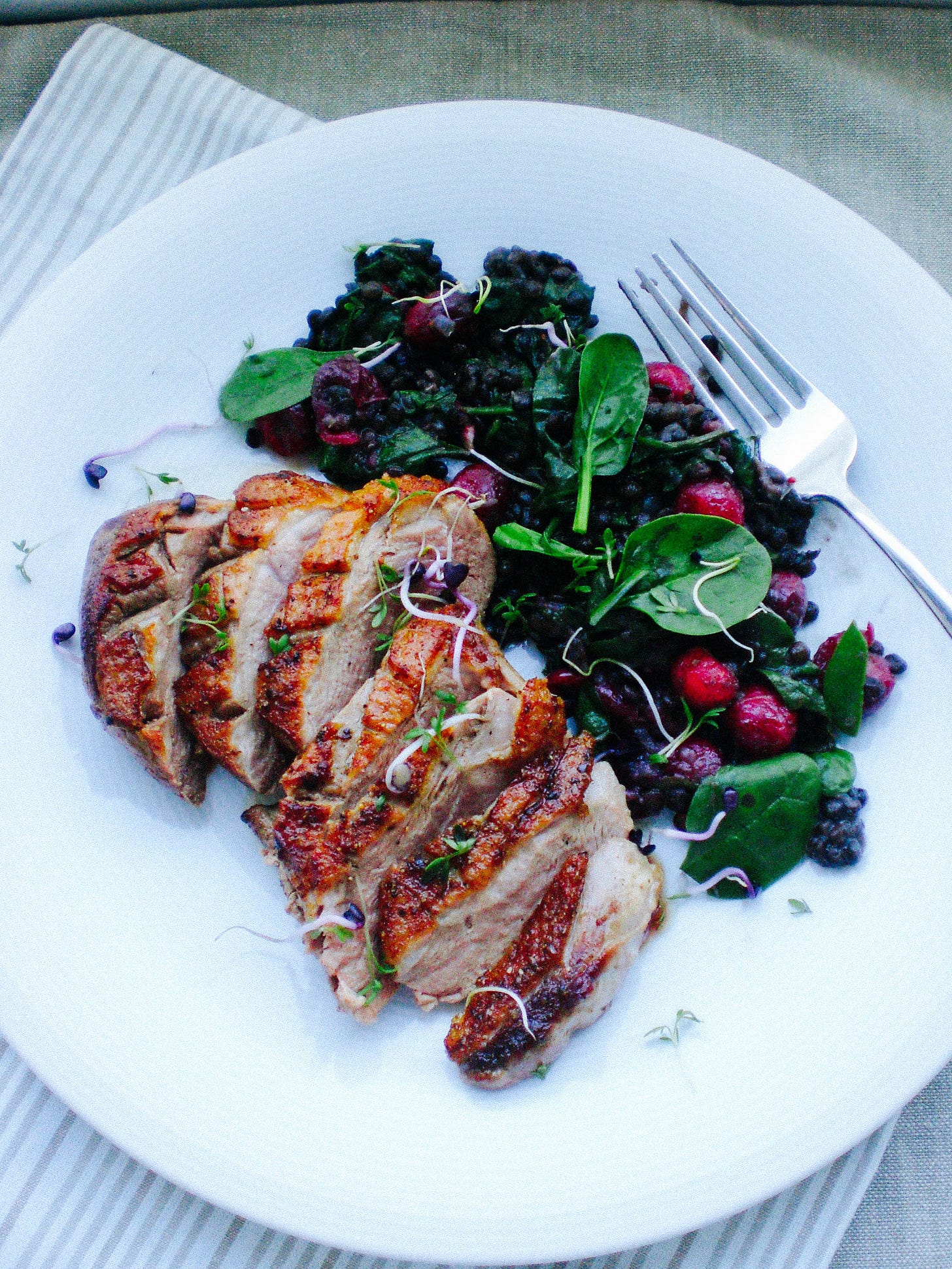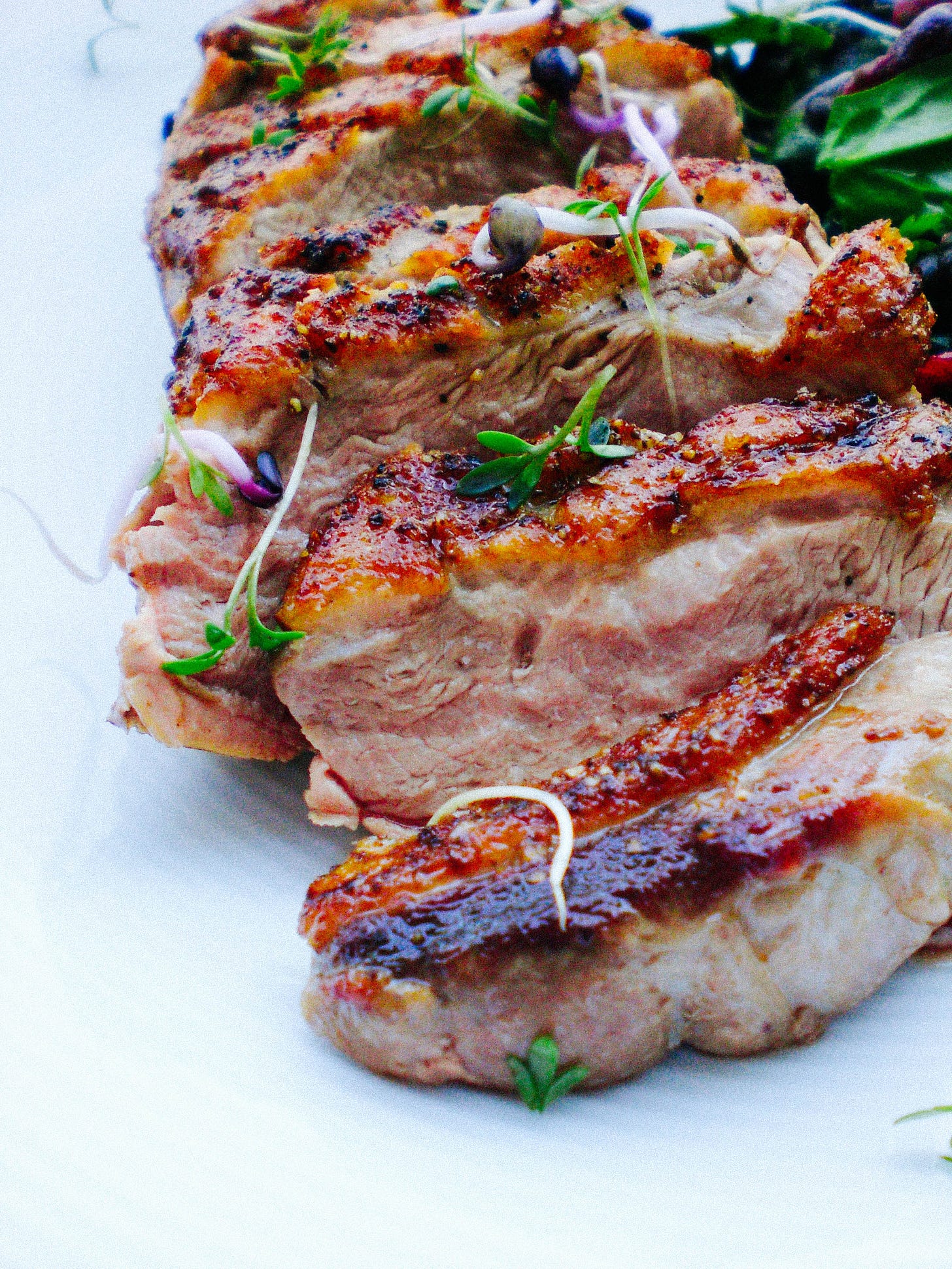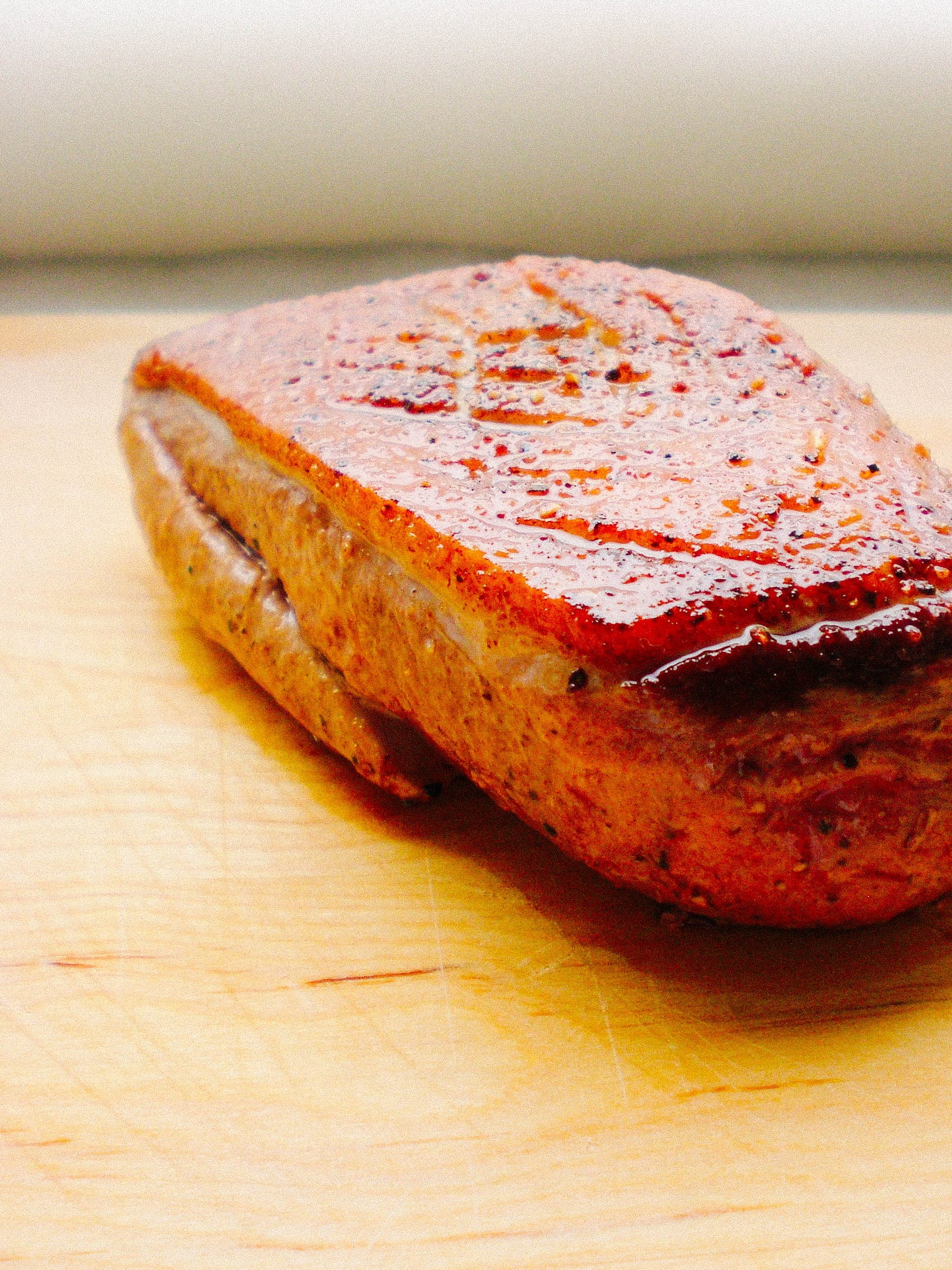Pan-fried duck breast with a warm salad of Beluga lentils, spinach and cranberries
Perfect for a festive dinner
Published originally on my blog on 18 December 2012
I don't think poultry is properly represented on this blog of mine even though we eat our fair share of it.
We have chicken very often, once, sometimes twice a week, and when I want to be more adventurous and a little bit naughty, I cook duck, goose or quail, particularly for special occasions.
Duck is not a simple little bird, it's not like chicken. It is gamey and delicious and pretty fatty, with its beautiful thick layer of skin that renders and becomes the stuff culinary dreams are made of. Roast potatoes and fried eggs are completely transformed when cooked in duck fat. Try it.
During the holidays, I love to prepare duck confit which is a French dish of duck legs that are first salted and refrigerated for up to thirty-six hours and then slow-cooked, poached really, in their own fat. The result is superb but I don't always have time for such complicated dishes.
The simplest and quickest way for me to enjoy duck is by pan-frying the breast. I usually pair it with roasted vegetables or baked potatoes (in duck fat of course) but recently I discovered a wonderful accompaniment for duck breast. A warm salad of Beluga lentils with cranberries and spinach. Quite festive too.
The pairing is marvelous. The duck breast is crispy crackly on the outside and tender and moist on the inside but it needs something to cut through all that richness and that's where the salad comes in. The earthiness of the lentils and the tangy acidity of the cranberries complement perfectly the sweetness and fattiness of the duck, while the spinach freshens up the whole dish.
It is a complete and utter delight, ideal for a festive dinner or even for an alternative Christmas lunch. Unconventional is the way to go sometimes.
Pan-Fried Duck Breast with a Warm Salad of Beluga Lentils, Spinach and Cranberries
Beluga lentils are small black lentils. They're called beluga because when raw and wet, they glisten and strongly resemble caviar. They are very similar in texture to the French green Puy lentils as they keep their shape when cooked. If you can't find them, substitute with Puy lentils.
Pair the dish with a red Côtes du Rhône.









